Saturday night self-care: Why making pasta is the new yoga
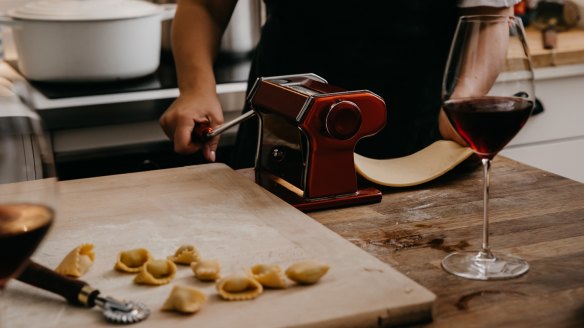
How a weekend ritual became a mindful meditation, then a cookbook to soothe anxious souls with busy hands.
This is a story of JOMO – the Joy Of Missing Out. Told, ironically, by a person whose entire professional brief had been to instil FOMO – the Fear Of Missing Out – in others.
Elizabeth Hewson, the PR consultant for some of the country's most influential restaurants (Quay and Firedoor among them), quit the business late last year to have a baby. And it was about then that her anxiety really made itself known. She needed an outlet. Somewhere to pour all that high-octane energy.
Meditating and stillness were not for her. She discovered pasta, a meditation for the soul and the stomach that utilised her busy hands and provided a sense of stillness for her hot brain.
Her weekend ritual became Saturday Night Pasta, a book about smoothing whatever the world throws at us – basically the whole of 2020 – by establishing a routine that can be enjoyed with friends or with your own sweet self. Shaky about your place in life? It's OK. Make pasta 'til you feel better.
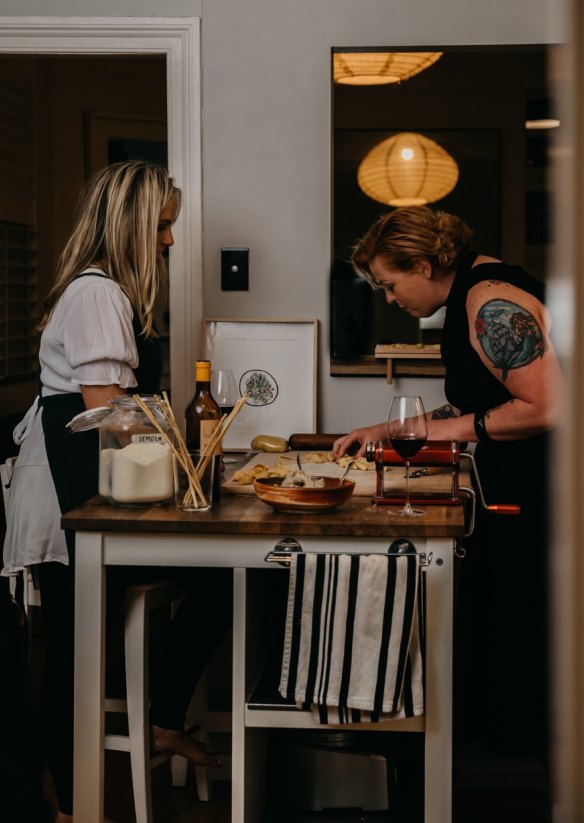
It's less about making something spectacular as about the feeling you get from having your hands in the dough. And Hewson goes to great pains to describe the process over the result.
So what equips her to write about one of the oldest cuisines on the planet? She'd be the first person to tell you, "nothing". But she'll also be the first person to tell you, "that's not the point". This book is not about creating perfect pasta. It's about her ability to harness the roaring rapids inside her head and turn them into a project of self-care fuelled by flour, eggs and water.
As I discovered on a Saturday night making pasta with Hewson just a few weeks ago, unlike bread, you can't really make bad pasta. With enough elbow grease and time, the worst that can happen is that it'll be "OK". But with a few little nudges, you can make something delicious.
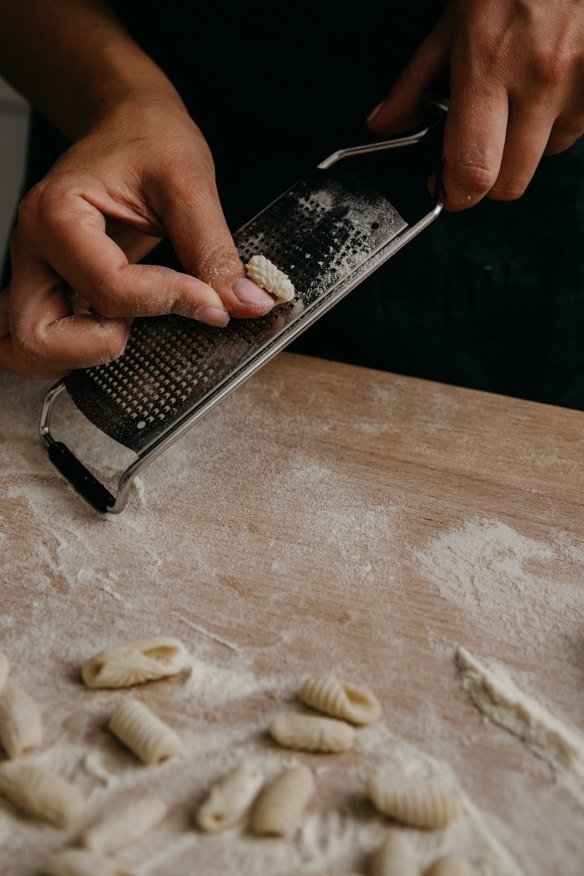
If the entire idea of making pasta from scratch daunts you, Hewson taught me a semolina dough is an excellent place to start (see recipe below). You can pick up semolina flour in most supermarkets, and the only other ingredient you need is water. No fancy "00" flour, no eggs, just a pinch of salt.
There are two vital components of pasta making: kneading and resting. When you work the dough by kneading or massaging it, you're causing the gluten strands within the flour to tense up and tighten. This makes the pasta dough nice and strong.
But the other key step is to rest the dough once it's tensed up, because you want strength, but you also want flexibility – much like working any muscle in your body. Ideally, you'd knead the dough for around 10 minutes, let it rest for an hour or so, and then go again. You can then rest it until you're ready to use it.
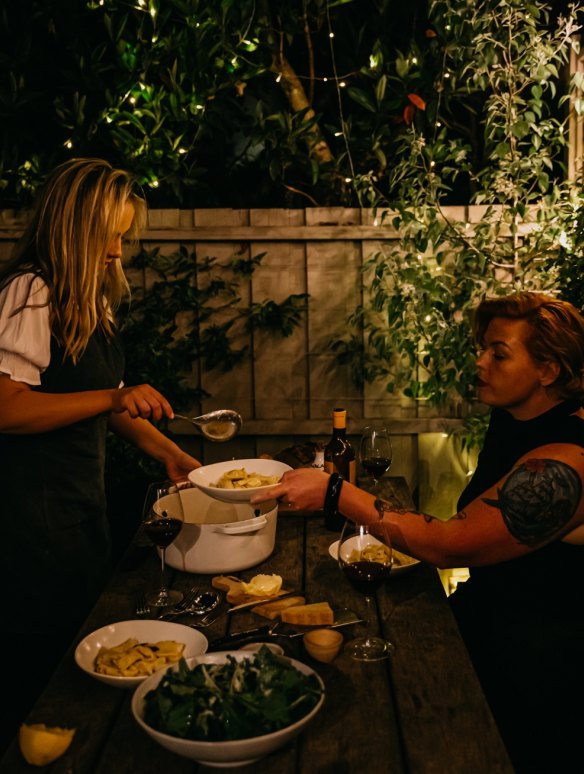
Hewson treats the kneading motion like a mix between calisthenics and a stress ball. And while you could throw the ingredients into a food processor, she makes the point that without getting your hands dirty, you don't get a very good sense of how the dough is feeling. Does it feel too tense? Too dry? Too wet?
All those things are solved by being hands on and trusting that by pulling, pushing, squishing and squeezing, you'll eventually get a smooth ball of dough. Working it by hand is also a central Saturday Night Pasta tenet – this is meant to be an exercise to relieve stress and ease anxiety; having a machine whirring away in the background isn't exactly soothing.
Think about making a semolina dough the same way you might Play-Doh. It's just an amorphous blob made from very basic ingredients that has the ability to be turned into just about anything your heart and hands desire.
You don't need any special equipment to turn that dough into, say, orecchiette – a shape made purely by rolling out a piece of dough into a long snake, cutting it roughly into centimetre-sized nubs, then taking each one and applying pressure, dragging your finger in a downwards motion, causing the pasta to flatten and curl.
If you were to eat Hewson's pasta, you wouldn't taste the hours of self-doubt, nervous tension or waves of panic. You would taste a silkiness that comes with honing her craft.
Her medicine is movement. And that's something she'd love her readers to practise. The process of making pasta is mindful meditation for food lovers.
Handy pasta accessories
These objects of culinary lust aren't necessary, just lovely to have
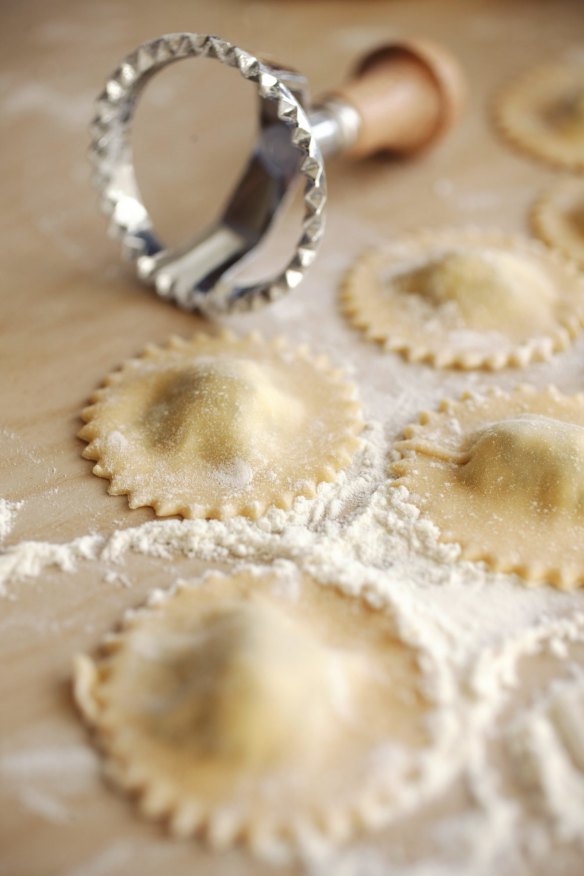
You don't need special equipment to make pasta. One of the heartstrings of Saturday Night Pasta is embracing irregularity. "My pasta is not perfect and it's not restaurant-quality," says Hewson.
Great things can be achieved with the back of a sieve, a Microplane or even, as she shows, using the ridges on a loaf of sourdough. The most important tool of all is your own two hands.
- Pasta/gnocchi board for making ridges in your pasta shapes to better catch that precious sauce.
- Pasta machine to make life a heck of a lot easier when rolling out egg dough. The pasta attachments for KitchenAid are also excellent.
- Dough cutter to create uniformity. Any pastry cutter will do for this but a metal cutter with a wooden handle just looks so much prettier.
- Pasta cutter for good looks. You know those frilly edges on ravioli? They're made with one of these little rollers.
- Really nice scales to weigh your eggs, weigh your flours, weigh how much spaghetti you're about to ingest … the world is your oyster, really.
Elizabeth Hewson is selling her Australian-made pasta tools via saturdaynightpasta.com.au, or check out costanteimports.com.au for Italian-made boards, stamps, rolling pins and more.
Fake it like you made it
Is making pasta falling into the too-hard basket? Never fear – you can support local producers instead.
SYDNEY
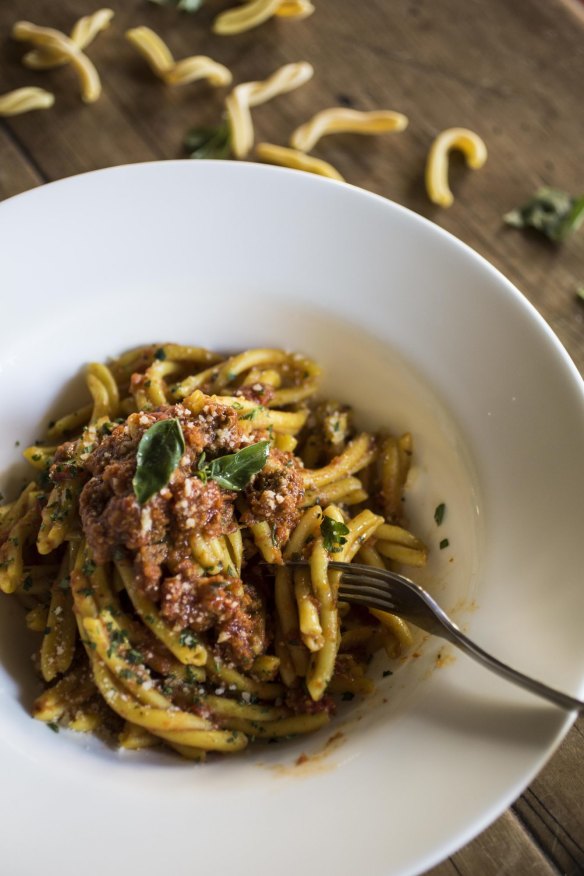
Fabbrica
Brand new from the Ragazzi guys, this little pasta store offers a rotating list of eight types of pasta to take home as well as focaccia and Italian-style sambos.
161 King Street, Sydney, ciaofabbrica.com
Lucio's
This Paddington stalwart morphed into a deli and boutique bottle store during COVID. The restaurant has reopened but you can order online to enjoy Lucio's at home.
47 Windsor Street, Paddington, luciosdeli.square.site
Pasta Emilia (pictured)
Can't make it down to Carriageworks Farmers Market to buy from their stall, or their physical restaurant and shop in Surry Hills? Good news! You can buy their entire pasta selection online.
259 Riley Street, Surry Hills, emilia.com.au
MELBOURNE
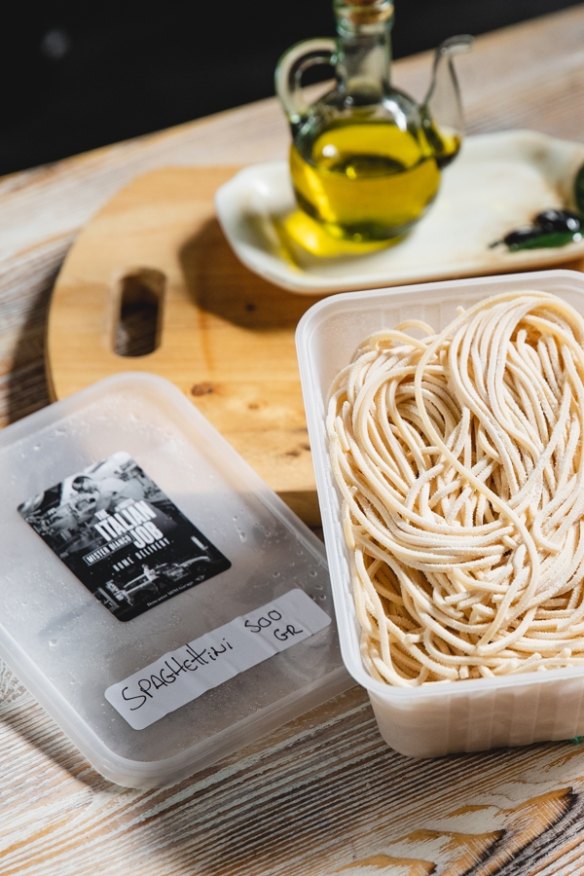
Grossi a Casa
The Grossi's midnight spaghetti, replete with that anchovy garum spiked-sauce, can be on your plate in seconds from their ready-to-roll range, or pick up fresh tonnarelli and gnocchi imbued with generations of pasta-making chops.
80 Bourke Street, Melbourne, grossiacasa.com
Lello Pasta Bar
This pasta haven is your go-to for specialist shapes. See trottole, twists named for spinning tops, or casarecce made with dark "grano arso", a toasted flour from Puglia.
150 Flinders Lane, Melbourne, lello-pasta-bar.myshopify.com
Mister Bianco (pictured)
Candy-shaped caramelle, squid ink spaghettini and roasted pumpkin casoncelli (stuffed crescents from Lombardy) made with Tuerong farm flour are just the tip of the carb-berg.
285 High Street, Kew, misterbianco.com.au
Basic semolina dough
Semolina pasta works with the same quantities of flour per person as egg pasta, so 100g (2⁄3 cup) semolina flour for one person. The ideal moisture content, however, is slightly lower and you'll require 45ml of water per 100g of flour. So, for two people, you're looking at 200g (11⁄3 cups) semolina flour to 90ml of warm water. The dough can be kept in the fridge, tightly wrapped in plastic wrap for up to two days. Always bring your dough to room temperature before using.
INGREDIENTS
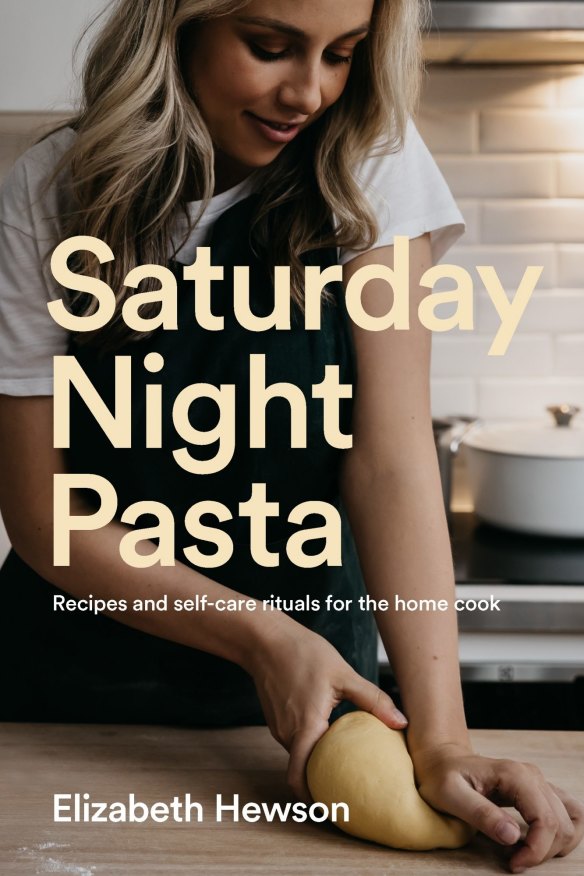
- 200g (1⅓ cups) semola di grano duro (semolina), plus extra for dusting
- 90ml warm water
METHOD
- Weigh out your ingredients and place the flour in a large shallow bowl. Using your fingers, make a well in the middle of the flour and pour in the warm water. Use your hands to mix the water and flour. Once things have started to come together, you can tip the dough onto your work surface. You'll still have small bits of flour everywhere and the texture will be very crumbly.
- Take a deep breath and squeeze everything together, moving the dough around with force to mop up any excess flour. A pastry cutter helps to cut the dough to reveal the wetter parts, which can then be used to mop up any remaining flour.
- Now you knead. If you've already made egg pasta dough, you'll notice that the semolina dough has a different texture and touch. It won't be as stretchy and pillowy as an egg dough, but the end result will still be silky and smooth. Squeeze your dough into a ball. Cup your hands around the dough and, using your palms, push it out, wrap your fingers around the top and roll it back in. Think of it as a tide going in and out, in and out. You don't want to be tearing the dough apart, but using the stretch to push it forward and roll it back up. You may find it easier to push with the heel of one hand and roll the dough back up on itself with your other hand.
- Remember to breathe. Even though we are unwinding here, we still want to keep moving at an energetic pace to prevent the dough from drying out. Like egg dough, if things start to feel too dry, mist or wet your hands and continue to knead. Keep kneading the dough for 5-7 minutes, no more.
- You'll notice the texture change substantially – it will become smooth and soft, just like a baby's bottom! Wrap in plastic wrap or a tea towel and leave to rest for 20 minutes. Breathe. Nice job.
Serves 2
Saturday Night Pasta by Elizabeth Hewson, photography by Nikki To, Published by Plum, RRP $36.99, , available October 27, buy now
